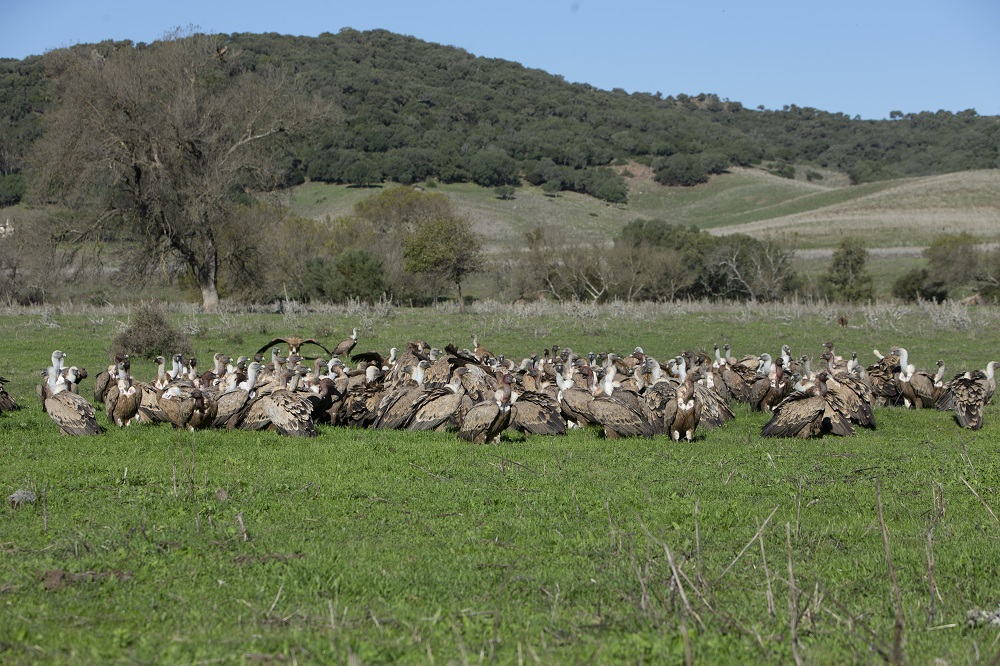
Welcome
Welcome to the official website of the Doñana Biological Station (EBD-CSIC)...

The Doñana Biological Station: EBD-CSIC
The Doñana Biological Station is a public Research Institute belonging to the Spanish Council for Scientific Research CSIC in the area of Natural Resources...

Mission
Our fundamental mission is to carry out multidisciplinary research of the highest standard directed to understanding the way in which biodiversity is generated, maintained and deteriorates, as well as the consequences of its loss...

Our methods
We apply many techniques within a multidisciplinary framework, from molecular genetics to remote sensing, and from modelling to physiological and isotopic analyses...

Monitoring the environment
Monitoring biodiversity at the Doñana Natural Space cover a wide range of communities, including both terrestrial and aquatic organisms...

Aims
Our aims include the study of the ecological and evolutionary processes by combining field work, mathematical and statistical models and physiological and genetic analysis...
 Outstanding
Outstanding
-
 La Fundación Jaime González-Gordon ofrece cuatro becas para el desarrollo de Trabajos de Fin de Máster sobre Doñana
La Fundación Jaime González-Gordon ofrece cuatro becas para el desarrollo de Trabajos de Fin de Máster sobre Doñana -
 Five contracts to carry out a doctoral thesis in the Doñana Biological Station - CSIC
Five contracts to carry out a doctoral thesis in the Doñana Biological Station - CSIC -
 Actividades de la Estación Biológica de Doñana en la Noche Europea de los Investigadores
Actividades de la Estación Biológica de Doñana en la Noche Europea de los Investigadores -
 ICTS-RBD prepares the 30th Migratory Passerine Bird Ringing Campaign in Doñana
ICTS-RBD prepares the 30th Migratory Passerine Bird Ringing Campaign in Doñana -
 Start of selection procedure for new EBD Director
Start of selection procedure for new EBD Director
 News
News
Apex scavengers from different European populations converge at threatened savannah landscapes
Adult Eurasian griffons belonging to colonies located from Andalusia to French Pyrenees converge in the threatened Iberian "dehesas" to forage, after long-range forays up to 800 km. These are the results of a new study, recently published in the journal Scientific Reports and led by the Doñana Biological Station – CSIC. The Miguel Hernández University of Elche, the University of Seville, the Pablo de Olavide University, the University of Lleida, and the Basque Research and Technology Alliance have also taken part in the study, along with researchers from the University of Montpellier and the Parc National des Pyrénées.
The first author, Alejandro Delgado González, highlights that "this research is based on the dataset of adult Eurasian griffon vultures tagged with GPS. The five areas of study and the number of tagged individuals, more than 100, makes this project the most ambitious about movement Ecology carried out in Europe with scavengers". Because of its size and abundance, Eurasian griffon has an important role as a provider of key ecosystem services, such as the elimination of livestock leftovers at zero cost for exploitation owners. That's why it is interesting to know how these vultures move and which factors define their movements.
The results, based on the huge amount of information provided by the devices (more than 142 million locations) dismantle the popular belief that griffon vultures do not move far from their colonies. This study shows how individuals can travel hundreds of kilometers to settle during variable periods in different areas in Extremadura, Castilla la Mancha and western. Then they return to their original colonies. Very interestingly, these movements involved more females than males, even with fledglings in the nests, which are left in charge of their partners.
Vultures from the five populations studied (French Pyrenees, Catalan Pyrenees, Ebro Valley, Cazorla, and Cadiz) have converged in the same region of the south-western Iberian Peninsula. Analyses show that "dehesas" determine the attraction and convergence of these birds in the region. "Dehesas" have diverse traditional uses where oak trees, grass, agriculture, and Mediterranean species gather, are extremely rich in biodiversity and have different, abundant, and attractive food resources. This is due to the extensive livestock farming practices and the more permissive sanitary laws that force owners to leave dead animals available for birds. Additionally, wild ungulate populations increased in Mediterranean ranges, which provide resources thanks to natural mortality and big game hunting.
Ainara Cortés-Avizanda and José Antonio Donázar, directors of this research, conclude that "dehesas are good examples of how traditional human economies favor the maintenance of large spatial-scale processes, which may be key to maintaining functions and services within ecosystems. Future conservation strategies for Iberian "dehesas" must consider the existence of organisms coming from distant regions, so any approach must be transboundary between regions and countries".
Reference:
Delgado-González, A. et al. (2022). Apex scavengers from different European populations converge at threatened savannah landscapes. Scientific Reports 12, https://doi.org/10.1038/s41598-022-06436-9
https://doi.org/10.1038/s41598-022-06436-9
